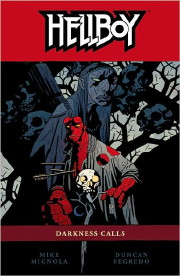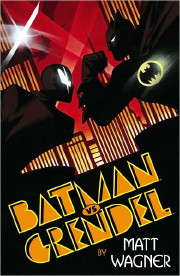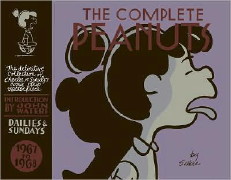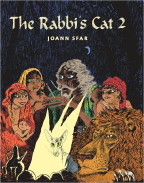Review: Hellboy Franchise Hits #8 With ‘Darkness Calls’ and ‘Killing Ground’
In the last few weeks, both of Mike Mignola’s related series for Dark Horse have hit their eighth collected volumes. So, while the second movie – prominently advertised on both covers – is still forthcoming, let’s see what’s going on with the Hellboy of the printed world.
 Hellboy, Vol. 8: Darkness Calls
Hellboy, Vol. 8: Darkness Calls
Written by Mike Mignola; art by Duncan Fegredo
Dark Horse, May 2008, $19.95
Hellboy has been wandering alone for about six years now — as one character remarks helpfully, late in this volume — since he walked away from the Bureau of Paranormal Research and Defense. He’s hasn’t particularly been looking for trouble, unlike his [[[B.P.R.D.]]] days, but trouble and [[[Hellboy]]] are never that far from each other.
After some adventures and a shipwreck on the coast of Africa — in the last volume, [[[The Troll Witch and Others]]] — Hellboy has turned up at the home of his old friend Harry Middleton, who was part of the old B.P.R.D. team of the ’50s with Hellboy and Professor Bruttenholm. Hellboy is hoping to rest, but how likely is that?
Meanwhile, a minor villain named Igor Bromhead attempts to harness the power of the witch-goddess Hecate — who Hellboy beat up, but didn’t completely destroy, several books ago — and the witches of the world plot their own revenge against Hellboy. These two separate sub-plots are more connected than they first appear to be, of course…


 This is another one of those weeks when we’re heading back over territory we’ve seen before – I’ve got three follow-up volumes today, all from Yen Press, of somewhat different manga series. So let’s take the zombies first, shall we?
This is another one of those weeks when we’re heading back over territory we’ve seen before – I’ve got three follow-up volumes today, all from Yen Press, of somewhat different manga series. So let’s take the zombies first, shall we?



 Joann Sfar, one of the major lights of the current European graphic novel scene, has written or collaborated on more than one hundred books, but probably his most famous and acclaimed work is the original [[[The Rabbi’s Cat]]], which won the prestigious Jury Prize at the Festival International de la BD d’Angouleme (Angouleme International Comics Festival).
Joann Sfar, one of the major lights of the current European graphic novel scene, has written or collaborated on more than one hundred books, but probably his most famous and acclaimed work is the original [[[The Rabbi’s Cat]]], which won the prestigious Jury Prize at the Festival International de la BD d’Angouleme (Angouleme International Comics Festival). The “Dungeon” series has gotten so full of stories, so complicated, that there’s a diagram on the back of this book to explain how all of the sub-series relate to each other.
The “Dungeon” series has gotten so full of stories, so complicated, that there’s a diagram on the back of this book to explain how all of the sub-series relate to each other.








